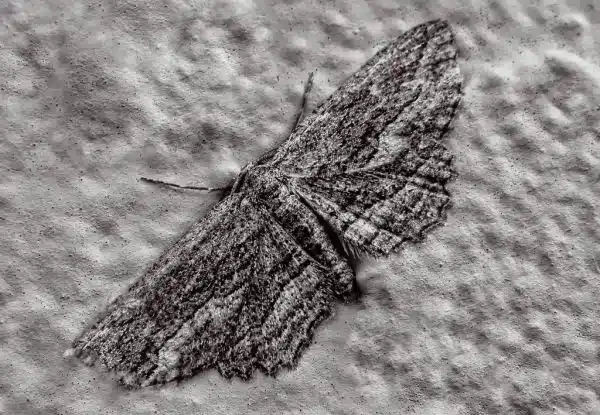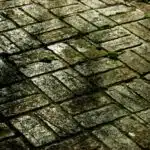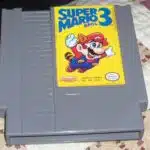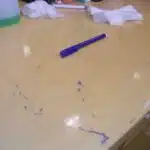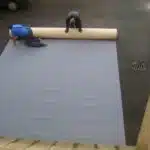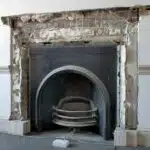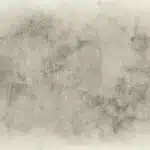When it comes to cleaning stucco, there are a few key things to keep in mind in order to ensure that the job is done effectively and efficiently. Stucco is a popular choice for exterior cladding due to its durability and low maintenance requirements. However, over time, stucco can become dirty or stained, which can detract from its aesthetic appeal and potentially damage its surface. As an expert in the field of stucco cleaning, I am here to provide you with a comprehensive guide on how to clean stucco properly.
Stucco is a porous material that can absorb dirt, dust, and pollutants easily. Therefore, it is important to approach the cleaning process with care and attention to detail. In this article, I will outline the steps required for cleaning both painted and unpainted stucco surfaces. Additionally, I will offer tips on how to maintain your cleaned stucco so that it remains looking fresh and new for years to come. By following my expert advice on how to clean stucco, you can ensure that your home or building maintains its curb appeal while also protecting its structural integrity.
Understanding Stucco And Its Properties
Stucco is a popular material used in construction due to its durability, versatility, and aesthetic appeal. Stucco application involves mixing cement, sand, and water to create a plaster-like substance that can be applied to various surfaces such as walls and ceilings. Once the stucco has been applied, it can last for many years with proper maintenance.
Stucco maintenance tips include regular cleaning and inspection to ensure its longevity. Cleaning stucco involves removing dirt, grime, and other contaminants that can damage the surface over time. It is important to use the appropriate cleaning solution for your type of stucco to avoid damaging the surface. Additionally, homeowners should inspect their stucco periodically for signs of wear and tear such as cracks or discoloration.
Identifying the type of stucco you have is an important step in maintaining its appearance and ensuring it lasts for many years. Different types of stucco require different cleaning methods, so it’s essential to know what kind of stucco you have before attempting any cleaning or repairs. In the next section, we will discuss how to identify the type of stucco you have and provide some tips on how to clean each type effectively.
Identifying The Type Of Stucco You Have
- Stucco is a type of wall and ceiling finish made of sand, cement, and water, and is widely used in construction for both interior and exterior walls.
- There are three main types of stucco: traditional, acrylic, and synthetic.
- Traditional stucco has a smooth texture with a slightly grainy finish, while acrylic stucco has a smoother, more granular texture.
- Synthetic stucco is the most modern type of stucco, and it has a more textured, even finish compared to traditional and acrylic stucco.
Types Of Stucco
When it comes to cleaning stucco, one of the first steps is identifying the type of stucco you have. There are various types of stucco used in construction, each with different compositions and properties that affect how it should be cleaned. Applying the wrong cleaning method or solution can cause damage to your stucco, so it’s crucial to know what type of stucco you’re dealing with.
Traditional stucco is a cement-based mixture applied in multiple layers over metal mesh or wood lath. It’s durable and resistant to impact and fire but prone to cracking and water damage. Synthetic stucco, also known as Exterior Insulation and Finish Systems (EIFS), consists of an insulation board attached to the wall surface followed by a base coat and a finish coat. EIFS is energy-efficient, but it’s vulnerable to moisture infiltration, which can lead to mold growth and structural damage. Repairing stucco requires careful consideration of its composition since traditional and synthetic stuccos require different repair methods.
Another type of stucco is Venetian plaster, which is made from marble dust mixed with lime putty or acrylic resins for a smooth finish that resembles polished stone. Venetian plaster is delicate and scratches easily, requiring gentle cleaning methods like dusting or wiping with a soft cloth. Some Venetian plasters contain metallic pigments that may tarnish if exposed to acidic cleaners or abrasive scrubbing tools. Knowing what type of stucco you have will help you choose the right cleaning method and avoid costly repairs in the future.
In conclusion, identifying the type of stucco you have is vital when it comes to cleaning and maintaining your home’s exterior. Whether you have traditional cement-based stucco or modern EIFS, understanding their properties will help you determine the best way to clean them without causing damage. If in doubt about how to clean your specific type of stucco, consult a professional stucco cleaning expert to ensure your home’s exterior remains in top condition.
Identifying Characteristics
Identifying the type of stucco you have is crucial in determining the appropriate cleaning method to use. One way to identify the stucco type is through its characteristics. For traditional stucco, it has a cement-based mixture applied in multiple layers over metal mesh or wood lath, making it durable and resistant to impact and fire but prone to cracking and water damage. On the other hand, synthetic stucco or EIFS consists of an insulation board attached to the wall surface followed by a base coat and a finish coat, making it energy-efficient but vulnerable to moisture infiltration that can lead to mold growth and structural damage.
Common issues and cleaning challenges may arise when identifying stucco types. Traditional stuccos are prone to water damage, cracking, and discoloration that require different repair methods. Meanwhile, synthetic stuccos require proper installation since improper installation may cause moisture infiltration, leading to mold growth and structural damage. Venetian plaster, a delicate type of stucco made out of marble dust mixed with lime putty or acrylic resins for a smooth finish that resembles polished stone, requires gentle cleaning methods like dusting or wiping with a soft cloth as some contain metallic pigments that may tarnish if exposed to acidic cleaners or abrasive scrubbing tools.
Henceforth, identifying the characteristics of your stucco type plays an essential role in maintaining your home’s exterior appearance. It helps you determine which cleaning method is appropriate without causing any damage while addressing common issues such as water damage, cracking, discoloration for traditional stuccos; improper installation leading to mold growth and structural damage for synthetic stuccos; and delicate composition requiring gentle cleaning methods for Venetian plasters. By doing so, you can ensure that your home’s exterior remains beautiful and well-maintained for years to come.
Preparing Your Cleaning Solution
After identifying the type of stucco on your home, it is time to start preparing your cleaning solution. One common option is a mixture of water and white vinegar, with a mixing ratio of one part vinegar to three parts water. This solution is effective in removing dirt and grime from stucco surfaces without causing damage. However, if you prefer an alternative cleaning solution, there are other options available that can also get the job done.
Another alternative cleaning solution for stucco is a mixture of warm water and mild dish soap. The mixing ratio for this solution is one tablespoon of dish soap per gallon of warm water. This option is gentle enough to use on delicate surfaces but strong enough to remove tough stains. Additionally, this method can be used with a soft-bristled brush or a pressure washer.
When choosing which cleaning solution to use, it is important to consider any special circumstances surrounding your stucco. For example, if you are dealing with mold or mildew growth on your stucco surface, you may need to opt for a more powerful cleaning solution such as bleach or hydrogen peroxide. Always do research and test small areas before applying any new cleaning solutions to avoid damaging your stucco surface.
Protective gear and equipment needed for cleaning stucco will depend on the specific cleaning method chosen. For example, when using a pressure washer, eye protection and sturdy shoes are necessary. When using chemical cleaners such as bleach or hydrogen peroxide, gloves and long sleeves should be worn to avoid skin irritation. Overall, taking proper precautions will ensure safe and effective stucco cleaning results.
Protective Gear And Equipment Needed
Before starting the process of cleaning stucco, it is important to ensure that you have all the necessary protective gear and equipment. Safety precautions must be taken to avoid any potential hazards during the process. The following are some of the essential items that you need for this task:
Eye protection – It is recommended to wear safety goggles or glasses to protect your eyes from dust and debris while cleaning the stucco.
Respirator mask – A respirator mask will protect you from breathing in harmful particles and chemicals during the cleaning process.
Gloves – Wearing gloves will protect your hands from any chemicals or sharp edges on the stucco surface.
Pressure washer – This equipment is essential for cleaning stucco as it helps in removing dirt, grime, and other substances stuck on the surface.
Cleaning solution – The appropriate cleaning solution should be used depending on the type of stain or dirt present on the stucco surface.
It is important to note that safety precautions must always be taken seriously when dealing with any chemical or pressure washing equipment. Inadequate use of these tools can lead to serious injuries if not handled with care.
In summary, before starting to clean your stucco, make sure that you have all the necessary safety gear and equipment at hand to avoid accidents or mishaps. Always follow manufacturer instructions when handling any chemical solutions or pressure washing equipment. By taking these safety measures seriously, you can ensure a safe and effective cleaning process for your stucco surface.
Transitioning into the subsequent section about “removing surface debris”, it is important to first address one crucial step: prepping the area for cleaning by removing loose debris such as leaves, twigs, and other small objects that may interfere with a thorough cleaning process.
Removing Surface Debris
Did you know that 90% of stucco damage is caused by surface debris? This statistic highlights the importance of removing debris from your stucco in order to maintain its longevity and appearance. Removing surface debris can be done through a variety of methods, but using pressure washers is the most effective.
When using pressure washers to remove surface debris from stucco, it’s important to take precautions to prevent damage. Start with the lowest pressure setting on the washer and gradually increase until you find the level that effectively removes debris without damaging the stucco. Additionally, make sure to hold the washer nozzle at an angle and not directly at the stucco surface. Finally, never use hot water, as it can cause cracking or discoloration.
Preventing future debris buildup is just as important as removing existing debris. Regularly trimming trees and bushes near your home can reduce the amount of leaves and twigs falling onto your stucco. Installing gutters around your home also helps prevent buildup by directing rainwater away from walls. By taking these preventative measures, you can reduce the amount of cleaning needed in the future.
To continue cleaning your stucco, wetting the surface is an essential step.
Wetting The Surface
After removing the surface debris, it’s time to wet the stucco surface. Wetting the stucco has multiple benefits that can ensure a successful cleaning process. One major benefit is that wetting helps to prevent the cleaning solution from drying out too quickly, which can make it difficult to remove stains and dirt effectively. Additionally, wetting helps in loosening up dirt and grime, making them easier to remove.
To achieve the best results when wetting your stucco, there are some best practices you should follow. First, use a garden hose or pressure washer to spray water on the surface evenly. Ensure that you cover every part of the stucco with an even coat of water without saturating or over-saturating it. Secondly, allow enough time for the water to soak into the stucco before applying any cleaning solution. This will help soften up any dirt or grime for easier removal.
Wetting your stucco is an essential step in ensuring a successful cleaning process. The benefits of this step cannot be overstated as it assists in dissolving and breaking down dirt and grime while also preventing quick evaporation of cleaning solutions. By following the best practices when wetting your stucco, you’re sure to have a cleaner and brighter looking exterior that will last longer than expected. In our subsequent section, we’ll discuss how you can apply a cleaning solution on your wetted stucco surface for optimal results without damaging its integrity.
Applying The Cleaning Solution
When it comes to cleaning stucco, applying the cleaning solution is a crucial step in the process. To start, gather all necessary equipment such as gloves, goggles, a spray bottle or pressure washer and the cleaning solution. Using a pressure washer can be an effective way to apply the cleaning solution on large areas of stucco, but for smaller surfaces, a spray bottle can be used.
Before applying the cleaning solution, ensure that the surface is completely dry. Once dry, apply the cleaning solution onto the stucco surface either with a spray bottle or by using a pressure washer at a low setting. It’s important to evenly distribute the solution across the entire surface area to achieve optimal results.
After applying the cleaning solution, allow it to sit for several minutes before scrubbing by hand with a stiff-bristled brush. This will help loosen any dirt or grime that has accumulated on your stucco surface over time. Be sure to wear gloves during this process to avoid any skin irritation from harsh chemicals present in some cleaning solutions. In our next section, we’ll discuss how to effectively scrub your stucco surface to remove stubborn stains and dirt buildup without causing damage.
Scrubbing The Surface
Effective scrubbing techniques are essential when cleaning stucco surfaces. Stucco is a porous material that easily traps dirt, grime, and other contaminants that can cause discoloration and staining. When scrubbing stucco surfaces, it is crucial to use the right cleaning tools to avoid damaging the surface.
To begin, choose a stiff-bristled brush or a pressure washer with a low PSI setting. These tools will effectively remove dirt and grime from the surface without damaging the stucco. Ensure that you use gentle motions when scrubbing to prevent any damage to the surface.
When using a pressure washer, start by spraying water over the surface before applying any cleaning solution. This will remove most of the dirt and grime buildup on the surface. Then apply your chosen cleaner and allow it to sit for several minutes before rinsing it off with water.
- Use circular motions when scrubbing.
- Do not use abrasive materials such as steel wool or sandpaper.
- Always test any new cleaning products on an inconspicuous area first.
In summary, effective scrubbing techniques are vital in maintaining clean stucco surfaces. Choosing the right cleaning tools for your specific needs is also critical in avoiding damage to your stucco surfaces. By following these guidelines, you can ensure that your stucco remains clean and free from discoloration or stains caused by accumulated dirt and grime buildup on its surface.
Removing Stains And Discoloration
- Mildew can be removed from stucco by applying a mixture of mild detergent, warm water and bleach to the surface and gently scrubbing the area with a soft bristled brush.
- Oil stains can be removed from stucco by using a detergent cleaner and a stiff bristle brush to scrub the stained area.
- After scrubbing, rinse the area with clean, cold water to ensure all detergent residue is removed.
- For persistent oil stains, a degreaser may be necessary to ensure complete removal of the stain.
Removing Mildew
Mildew is a common problem that stucco homeowners face. It can grow on the surface of the stucco, creating unsightly stains and discoloration. Removing mildew requires a combination of techniques to ensure complete elimination.
One method for removing mildew from stucco is by using bleach. Mix one part bleach with three parts water in a spray bottle and apply it directly to the affected area. Allow the solution to sit for 10-15 minutes before rinsing it off with a power washer. Be sure to wear protective clothing and goggles when handling bleach.
Power washing is another effective technique for removing mildew from stucco. Use a pressure washer with a low-pressure setting and apply it evenly across the entire surface of the stucco. This will remove any buildup of dirt, grime, or mildew on the surface. Be cautious not to use too much pressure as this can damage the stucco’s texture.
Removing mildew from stucco can be challenging, but following these tips will help restore your home’s exterior appearance. Using bleach and power washing are two powerful tools that can eliminate unsightly stains while maintaining your stucco’s quality and durability.
Cleaning Oil Stains
As a stucco cleaning expert, it is important to address the issue of oil stains on stucco. Removing oil stains can be a challenging task, but with the right techniques and tools, it is possible to restore the appearance of your home’s exterior. Oil stains are usually caused by spills from vehicles or machinery, and if left untreated, they can penetrate deep into the stucco surface and become difficult to remove.
To remove oil stains from stucco, start by applying a degreaser solution directly onto the affected area. Allow the solution to sit for 10-15 minutes before scrubbing it off with a stiff-bristled brush. Be sure to wear gloves and protective clothing when handling the degreaser solution. After scrubbing off the stain, rinse the area thoroughly with water to remove any leftover residue.
Preventing future oil stains on stucco can be achieved by applying a clear sealer over the surface of the stucco. The sealer will create a barrier that prevents oil from penetrating into the surface of the stucco. Additionally, regular maintenance such as power washing can also help prevent future stains from forming. By following these tips for removing and preventing oil stains on stucco, homeowners can maintain their home’s exterior appearance and ensure its durability for years to come.
Rinsing The Surface
The surface of your stucco needs to be rinsed thoroughly after cleaning it. Rinsing is a crucial step in the process because it ensures that no cleaning solution or dirt is left on the surface. Failing to rinse properly can leave behind spots and streaks, which can be unsightly and difficult to remove.
Pressure washing is an effective method for rinsing stucco surfaces. It uses high-pressure water to blast away any remaining dirt particles or cleaning solution residue. However, be careful not to use too much pressure as it may damage the surface. It is recommended to use a pressure washer with a maximum of 1500 psi when rinsing stucco walls.
Alternatively, you can also use a soft bristle brush along with running water from a garden hose to rinse the stucco surface. This method is effective for small areas like window sills or entryways where using a pressure washer might not be practical. Be sure to rinse thoroughly with clean water until no soap suds remain on the surface before moving on to the next step – drying the surface.
As you finish up rinsing your stucco surface, it’s important to note that proper drying is just as crucial as thorough rinsing. Drying helps prevent water spots and streak marks from forming on the cleaned surface. In order to avoid this problem, make sure that your stucco has been completely dried before moving forward with any other steps in the cleaning process.
Drying The Surface
Stucco is a material that must be dried before cleaning and painting, and it can be done through natural drying or with the introduction of heat. Natural drying is the most common and preferred method of drying stucco, as it allows the material to dry gradually and evenly. However, heat can be introduced to expedite the drying process and reduce the time spent waiting for the stucco to be ready for cleaning. Heat should be applied evenly over the surface to ensure that the stucco does not crack or become damaged during the drying process.
Allow Stucco To Dry Naturally
Stucco is a popular material for both interior and exterior surfaces of buildings. Proper cleaning techniques are essential to maintain the aesthetic appeal of stucco surfaces, and drying is an important part of this process. When it comes to drying stucco, it’s crucial to allow the surface to dry naturally rather than using a towel or any other means. Air drying is an effective method that ensures the surface dries uniformly without leaving any residue or marks.
Compared to towel drying, air drying is much more efficient and less likely to damage the surface of your stucco. It allows for proper evaporation of moisture from every corner of the surface, which helps prevent mold and mildew growth. Additionally, towel-drying can leave streaks on the stucco surface, which detracts from its overall appearance. Therefore, allowing your stucco to air-dry after cleaning is by far the best option.
Drying time for stucco can vary depending on various factors such as humidity levels and temperature conditions in your area. However, on average, it takes about 24-48 hours for a freshly cleaned stucco surface to dry completely under normal circumstances. As such, you should avoid applying any treatments or paints until you’re sure that the surface has dried completely. This will ensure that no moisture gets trapped in between layers and cause potential damage over time. Remember always to allow your stucco surfaces enough time to dry naturally so that they remain looking great for an extended period!
Introduce Heat To Expedite Drying Process
Using heat is another effective way to expedite the drying process of stucco surfaces. It can significantly reduce the time it takes for your surface to dry, especially in humid or cold weather conditions. By using heat, you can minimize water damage and prevent mold and mildew from growing on the surface.
One method of using heat to dry stucco surfaces is by using a space heater or dehumidifier. These devices help to circulate warm air, which speeds up evaporation and removes moisture from the surface. However, it’s important to avoid placing these devices too close to the stucco surface as they may cause damage or discoloration. Instead, place them at a safe distance and let them run for several hours until the surface is completely dry.
The benefits of an expedited drying process cannot be overstated. It not only helps prevent water damage but also ensures that your stucco surfaces remain looking great for an extended period. If done correctly, using heat can be an efficient way to achieve this goal. So next time you clean your stucco surfaces, consider incorporating this technique into your drying routine for optimal results!
Sealing The Stucco
Applying sealant to stucco is an essential step in maintaining its longevity and appearance. A sealant acts as a protective layer that shields the stucco from external elements such as moisture, dirt, and UV rays. It fills in any cracks or crevices on the surface, preventing further damage to the stucco.
The benefits of sealing stucco are numerous. First, it prolongs the life of the stucco by reducing water infiltration that can cause mold growth and structural damage over time. Second, it enhances the appearance of the stucco by bringing out its natural color while protecting it from fading due to sun exposure. Third, it makes cleaning easier as sealant helps repel dirt and grime.
When applying sealant to your stucco, it is important to choose a product that is compatible with your specific type of stucco finish. It is also recommended to apply two coats for maximum protection. Applying sealant should be done on a clear day when there is no chance of rain for at least 24 hours after application. Once applied, allow ample time for the sealant to dry completely before exposing it to any moisture or sunlight.
To maintain your newly sealed stucco, avoid using harsh chemicals or abrasive materials during cleaning as this may damage the protective layer of sealant. Instead, use gentle soap and water with a soft-bristled brush or cloth to remove any dirt or stains. Regularly inspecting your sealed stucco for cracks or chips and repairing them promptly will help ensure its long-lasting protection and beauty.
Maintaining Your Clean Stucco
Imagine you’ve successfully cleaned your stucco walls and they look brand new. You’re now wondering how you can maintain this clean look for as long as possible. There are several maintaining techniques and prevention tips that can help.
First, make sure to regularly inspect your stucco for any signs of damage or wear. Any cracks or holes should be repaired immediately to prevent moisture from seeping in and causing further damage. Use a high-quality sealant to protect the stucco from water damage and other environmental factors.
Second, keep your stucco clean by regularly washing it with a mild cleaning solution and a soft-bristled brush. Avoid using high-pressure washers as they can damage the stucco’s surface. Also, be mindful of any vegetation growing near the stucco as it can cause staining and damage over time.
By following these maintaining techniques and prevention tips, you can keep your stucco looking clean and new for years to come. However, there may come a time when the damage is beyond repair or cleaning becomes too difficult. In such cases, it’s best to call a professional who has the expertise and tools necessary to restore your stucco to its former glory.
When To Call A Professional
Maintaining Your Clean Stucco is crucial in ensuring that it stays looking great for years to come. However, there are limitations to what you can do on your own when it comes to cleaning stucco. While DIY cleaning methods can be effective, they are not always enough to address serious stains and blemishes. That’s where hiring professionals comes into play.
Professional stucco cleaners have the necessary expertise and equipment to tackle even the toughest cleaning jobs. They know how to safely remove dirt, grime, and other debris without damaging your stucco or surrounding landscaping. Additionally, they can identify and address any underlying issues that may be contributing to the buildup of dirt and debris on your stucco.
While DIY cleaning methods may seem like a more cost-effective solution, they can actually end up costing you more in the long run if damage is done during the process. Hiring professionals will give you peace of mind knowing that your stucco is being properly cared for and that any potential problems are being addressed by experts in the field.
In conclusion, while there are steps you can take on your own to maintain clean stucco, there are also limitations to what you can achieve without professional help. By hiring professionals who specialize in stucco cleaning, you can ensure that your stucco looks its best while avoiding potential damage caused by improper cleaning techniques. Enjoy your freshly cleaned stucco with confidence knowing that it was professionally cleaned and maintained!
Conclusion: Enjoy Your Freshly Cleaned Stucco
Having a freshly cleaned stucco exterior not only enhances the appearance of your home, but also provides several benefits. Clean stucco helps maintain the structural integrity of your house and prevents moisture from seeping through, which can lead to mold growth and other damages. Additionally, regular cleaning can extend the lifespan of your stucco by preventing dirt and debris buildup that can cause erosion or discoloration.
When it comes to cleaning stucco, there are two options: DIY or professional cleaning. DIY cleaning involves using a pressure washer or a hose with a high-pressure nozzle, along with an appropriate cleaner. While this method may seem cost-effective, it requires proper knowledge about stucco and its vulnerability to water damage. Using excessive water pressure can cause cracking or chipping in the stucco, leading to expensive repairs. On the other hand, hiring professionals ensures that the job is done correctly and safely without any damage to your stucco.
In conclusion, maintaining clean stucco is essential for both aesthetic and functional purposes. It not only improves the appearance of your home but also protects against potential damages caused by moisture and dirt buildup. While DIY cleaning may save money upfront, it can result in costly repairs in the long run if not done properly. Therefore, investing in professional cleaning services is recommended for those who want to ensure their stucco is cleaned effectively without causing any damage.
Conclusion
Stucco is a popular choice for exterior walls due to its durability and ability to resist harsh weather conditions. However, over time, stucco can accumulate dirt, mold, and other unsightly debris that can detract from its appearance. Cleaning stucco requires careful attention to detail and the use of appropriate cleaning solutions and equipment.
Before beginning the cleaning process, it is important to understand the properties of stucco and identify the type of stucco you have. This will help you select the right cleaning solution and avoid damaging your stucco. Protective gear such as gloves and goggles should be worn during the cleaning process.
Removing surface debris is crucial in preparing your stucco for a deep clean. Once this has been done, sealing your stucco is an essential step to protect it from future damage. Maintaining your freshly cleaned stucco involves regular inspection and cleaning when necessary.
While cleaning your own stucco can be a rewarding DIY project, there are instances where it may be best to call in professional help. If you are unsure about how to clean your particular type of stucco or if there is extensive damage that needs repair, contact a professional for assistance.
In conclusion, understanding how to clean stucco properly requires attention to detail and protective measures. By identifying the type of stucco you have, preparing your cleaning solution correctly while also utilizing protective gear , removing surface debris carefully yet effectively while also sealing it after being cleaned will all aid in maintaining a beautiful exterior wall without needing constant upkeep by professionals or yourself.
Image Credits
- “Moth on Stucco” by FotoGrazio (featured)

